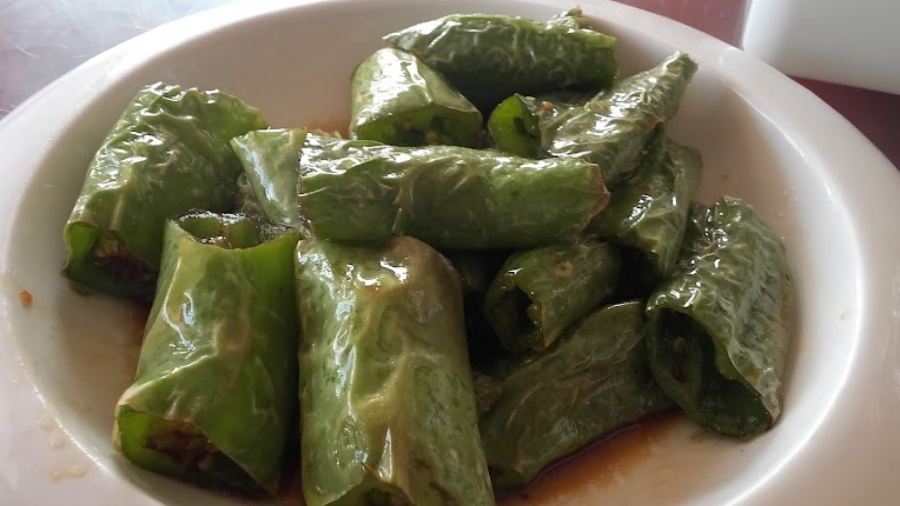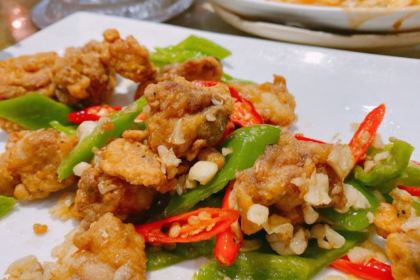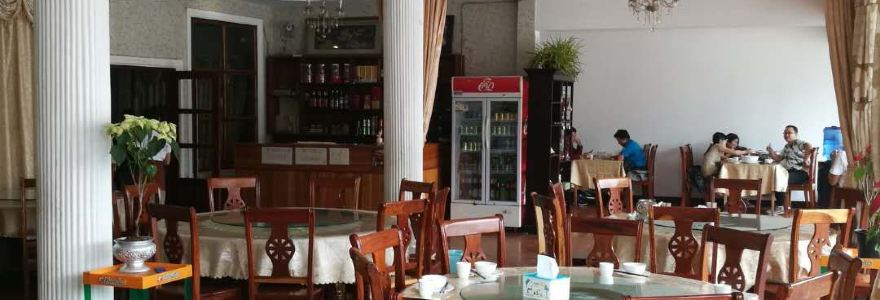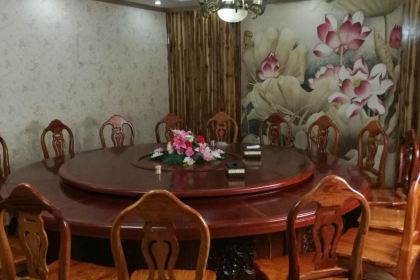Shuxiang Restaurant
No comments yet
|$





Currently closed|Open at 08:00 todayShow more
+856-20-23758888
V4CM+R62, Luang Prabang, Laos
 _We***16It's still very good to be able to eat authentic Sichuan hot pot abroad. The boss is from Sichuan, handsome and enthusiastic. Although the environment here is not as luxurious as the big one, it is clean and sanitary, and there are so many beautiful waiters, haha~
_We***16It's still very good to be able to eat authentic Sichuan hot pot abroad. The boss is from Sichuan, handsome and enthusiastic. Although the environment here is not as luxurious as the big one, it is clean and sanitary, and there are so many beautiful waiters, haha~Reviews of Shuxiang Restaurant
Some reviews may have been translated by Google Translate
0/5
All (10)
Latest
Photo reviews (1)
It's still very good to be able to eat authentic Sichuan hot pot abroad. The boss is from Sichuan, handsome and enthusiastic. Although the environment here is not as luxurious as the big one, it is clean and sanitary, and there are so many beautiful waiters, haha~
This is the best coffee I have ever had in Laos. My friend and I went to the countryside for a tour and happened to pass by this very inconspicuous coffee shop. We just quenched our thirst, but it was a pleasant surprise. This shop is 11 kilometers away from the city of Luang Prabang, and many European and American tourists ride from here on this road. It is rare to have a 5-star rating on Google. The facade is really simple, which makes people feel very amateur, but it is actually very professional. If you don’t look carefully, you won’t find such a facade at all. There are many coffee shops in Laos that are more simple than this one. This is a fixed coffee menu. 30,000 Laotian kip is exactly equal to 10 yuan. The price is very affordable. The boss will also launch today’s recommended desserts every day, which means that this dessert is only sold today. The three of us ordered: orange juice, Americano, and mocha. The only disadvantage of the outdoor chairs and tables in front of the door is that there is a lot of dust from the traffic. This is the fixed coffee menu. 30,000 Laotian kip is exactly equal to 10 RMB, which is very affordable. Depending on the boss’s mood every day, he will also launch today’s recommended dessert, which means that this dessert will only be sold today.
**Rafting experience and precautions on the Nam Khan River in Laos during the rainy season** The rainy season (May-October) is the best season for rafting on the Nam Khan River, with abundant water, rapid currents, lush rainforests on both sides, and full of wildness. When rafting, you can experience the exciting rapids, enjoy the tranquil river valley scenery, encounter local villages, and feel the original style of Laos. **Precautions:** 1. **Safety first**: Choose a regular travel agency, ensure that you are equipped with life jackets, helmets and professional guides; the water flow is complex in the rainy season, obey the command, and avoid acting alone. 2. **Waterproof protection**: Seal your belongings with waterproof bags, wear quick-drying clothes and non-slip shoes; there are many showers in the rainy season, so prepare a light raincoat. 3. **Health preparation**: Sunscreen and mosquito repellent are essential; avoid drinking raw water, and carry electrolyte drinks to replenish your energy. 4. **Respect nature**: Do not discard garbage, do not disturb wild animals, and protect the river ecology. Rafting in the rainy season is both risky and fun, so only by preparing in advance can you enjoy the adventure and beauty of nature!
Lao people prefer wild vegetables to cultivated vegetables, mainly due to the combined influence of natural conditions, dietary traditions and economic benefits: 1. **Rich natural resources**: Tropical forests and mountains are rich in a variety of wild vegetables (such as bamboo shoots and ferns), which are easy to collect and free of charge, and adapt to the environment of floods in the rainy season and water shortages in the dry season. 2. **Dietary tradition**: Wild vegetables have a unique flavor (bitter and sour are common), which conforms to the Laotian hot and sour food culture (such as "pickled vegetables" with glutinous rice), and is regarded as more natural and healthy. 3. **Economic considerations**: Growing vegetables requires irrigation, pest control and other costs, while wild vegetables have zero costs; the rural market is small, the planting income is low, and imported vegetables are cheaper in cities. 4. **Adaptability**: Wild vegetables are highly resistant to adversity and do not require fine management, which is suitable for Laos' extensive agricultural model. With the advancement of urbanization, the proportion of cultivated vegetables is slowly increasing, but wild vegetables are still a cultural symbol and practical choice.
Cycling through the streets of Luang Prabang is like going back in time, with ancient temples, colonial buildings and lush green trees complementing each other. In the morning, the monks go barefoot to beg for alms, pious and solemn; in the evening, the sunset over the Mekong River casts a golden afterglow, reflecting the fishing boats and leisurely tourists on the riverside. Cycling past each temple, the golden eaves shine in the sun, and the mosaics of the tree of life on the temple's outer wall tell ancient legends. On both sides of the street, French-style cafes are intertwined with local handicraft shops, and the air is filled with the aroma of coffee and roasted glutinous rice. Occasionally, street vendors will smile at you and hand you a bunch of roasted bananas or a glass of fresh coconut water. The pace of Luang Prabang is slow and gentle, and cycling is the best way to feel the city. The wheels roll over the cobblestone road, and the breeze blows on your face, as if every inch of land is telling its story. There is no hustle and bustle here, only tranquility and beauty, which makes people linger. Pay attention to safety and details when riding: 1. **Check the vehicle**: Make sure the brakes, tires, and chains are normal. 2. **Wear protective gear**: A helmet is a must, and wear reflective clothing when riding at night. 3. **Observe traffic rules**: Do not run red lights, drive on the right, and pay attention to pedestrians. 4. **Predict road conditions**: Avoid potholes and slippery roads, and keep a safe distance. 5. **Load properly**: Carry light luggage to avoid affecting balance. 6. **Take a break at the right time**: Take a 10-minute break every hour for long-distance riding. Ride safely and travel happily!
## The significance of donating some school supplies to rural schools in Laos Donating school supplies to rural schools in Laos may seem small, but it is of great significance. **For local students,** these stationery and books are important tools for them to acquire knowledge and change their destiny. Many children cannot afford even basic school supplies due to poverty. Donations can reduce their financial pressure, stimulate their enthusiasm for learning, and open up a wider world for them. **For local education,** donations can improve teaching conditions and improve the quality of education. The supplement of school supplies allows teachers to teach more effectively and students to participate in classroom activities better, thereby improving the overall level of education. **For donors,** this is not only a good deed, but also a spiritual baptism. By helping others, we can more deeply understand the diversity of the world, cultivate empathy and social responsibility. **For society,** donations promote educational equity and narrow the gap between urban and rural areas. Education is the cornerstone of development. Supporting rural education helps to cultivate talents and promote local economic and social progress. In short, donating school supplies not only conveys love, but also ignites hope for children in rural Laos and creates more possibilities for their future.